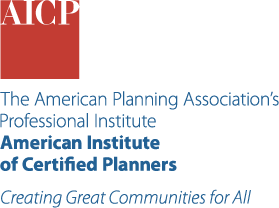Integrating Health Into the Comprehensive Planning Process
An Analysis of Seven Case Studies and Recommendations for Change
By Anna Ricklin, AICP, Nicholas Kushner, AICP

The issues facing cities and counties, and their neighborhoods and communities, continue to change and become more complex and, at the same time, bring the planning profession back to its roots in promoting public health. As planning has shifted toward sustainability, public health has been identified as a core element of communities that thrive, so cities have begun to integrate health into their comprehensive plans. In addition, the sustainability plan, a new cast of plan that takes a holistic view of natural systems and the human activities affecting them, seems well suited to focus on public health as key component of its policies.
Today, as public health concerns increasingly center on chronic disease and safety, specialists and city planners realize they cannot afford to operate in isolation any longer. Decisions that leaders have made regarding land use, urban design, and transportation have impacted local air quality, water quality and supply, traffic safety, physical activity, and exposure to contaminated industrial sites (i.e., brownfields). These decisions are linked to some of the most intractable public health problems, including adult and childhood obesity, inactivity, cancer, respiratory problems, and environmental justice.
Details
About the Authors
Anna Ricklin, AICP
Anna Ricklin, AICP is a passionate advocate for healthy communities and is the first Health in All Policies Manager for the Fairfax County. In that role, she acts as a health ambassador across county agencies, promoting the integration of public health objectives into county plans, policies, and building projects. Formerly, Anna oversaw applied research and place-based initiatives to advance healthy planning practice at the American Planning Association, and began her career at the Baltimore City Department of Transportation. Anna has a background in health impact assessment, active transportation planning, and cross-sector collaboration, as well as recent work establishing metrics for healthy planning. Anna holds a Master of Health Sciences from the Johns Hopkins Bloomberg School of Public Health and lives in Falls Church, VA.
Nicholas Kushner, AICP
Nick Kushner, AICP, is a Community Planner with the DC Department of Parks and Recreation (DPR) and Project Manager for DPR’s 20-year Parks and Recreation Master Plan, Ready2Play. Prior to coming to DPR, Nick worked with the DC Deputy Mayor for Health and Human Services on Age-Friendly-DC, a citywide plan to make DC accommodating for all-ages. Nick was also a Capital City Fellow with the DC Department of Energy and Environment, where he worked on the city’s long-range sustainability plan, Sustainable DC. Nick has also worked on the development of the District's Comprehensive Plan and Resilience Strategy as well as numerous neighborhood planning efforts.
Prior to joining DC Government, Nick interned with APA’s Planning and Community Health division where he co-authored the report, Healthy Plan Making. Nick has presented at numerous national and international conferences in the fields of planning, public health, aging, and resilience. Nick has a BA from the University of Minnesota and a Dual Master’s Degree in Urban and Regional Planning and Public and International Affairs from Virginia Tech.
Table of Contents
Acknowledgments
Introduction
Planning and Public Health
Role of the American Planning Association
Project Purpose and Background
Purpose
Project Background
Methods
Plan Selection
Map showing seven jurisdictions studied in this report
Outreach and Interviews
Findings and Analysis
Introduction
Champions
Context and Timing
Outreach
Health Priorities
Data
Collaboration
Funding
Implementation
Monitoring and Evaluation
Conclusion: Strengths and Areas for Improvement
Strengths
Areas for Improvement
Recommendations and Action Steps
Champions
Context and Timing
Outreach
Health Priorities
Data
Collaboration
Funding
Implementation
Monitoring and Evaluation
Public Health in Planning Process Model
Appendices
Appendix 1. Community Profiles: Case Studies of the Seven
Jurisdictions
Appendix 2. The Plans
Comprehensive Plans
Sustainability Plan
REFERENCES


